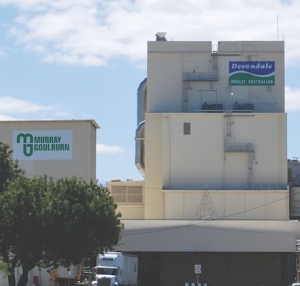Many have called the contest for Warrnambool Cheese & Butter (WCB) a major watershed event for the industry, but I would suggest the operational and capital transformation of MG to be a much bigger deal. Make no mistake, this will affect all dairy farmers.
If MG is to have any chance of achieving the shimmering target of being a much larger, globally relevant business, and realise additional value to the tune of A$1/kgMS from the market, it has to have better access to capital and that includes equity capital.
Australian dairy’s expensive supply chain based on small, aged plants and inefficient haulage weakens the advantages we might enjoy based on mostly cost-competitive dairy farming.
The challenge for MG is to deliver volume and unit-value growth. Sustained improvements in unit prices of dairy products won’t come unless the company is a much bigger and more relevant supplier to export customers. But success won’t come from growth for growth’s sake; MG must move well up the value scale to be a supplier of higher precision ingredients, nutritionals, and high-quality, long shelf-life UHT milks.
It will most likely require MG to also spend more on in-market facilities and relationships to secure that higher unit value.
Current customers need MG to grow with them as they meet the expanding demand for nutritional foods in developing markets in Asia and the Middle East – not remain a company puttering along processing no more than 1.5bn L of milk into exportable products.
Proposals to introduce an external investment vehicle and a mechanism for shares to be traded amongst MG supplier-owners are critical to establishing a permanent and expanding equity capital base beyond farmer owners. This can underpin the funding for current and future investment plans.
In developing and selling the path to such a model, MG will be walking a fine line, as Fonterra has demonstrated by its ground-breaking restructure over the past five years. Only time will tell whether the Fonterra model will work but it has gone well in its early days. It is a model that provides a long solution to underpin a long-term game plan.
MG will put its model out for discussion in a vastly different setting to Fonterra’s in New Zealand. Given the contest for suppliers, I expect the MG scheme will contain a feature allowing it to welcome all-comers into the supplier-shareholding ranks prior to qualification for the new structure to commence. This could provide an interesting spin following the eventual outcome of the WCB contest – farmer shareholders who sell WCB could take a second bite through MG shareholding.
Hopefully the debate about this important change will focus on the right issues. The core values of the cooperative are what are important to the true believers, and that won’t change: suppliers retaining control of their processing business, keeping skin in the game beyond farmgate, and providing leverage in setting milk value.
Hopefully the smaller peripheral and operational policies and issues won’t distract from this compelling step.
The board and management must continue to make profitable decisions based on business outcomes rather than perceptions of fairness and equity. It must operate – and demonstrate – a governance model with a board that possesses the skills and experience required to balance the needs of a diverse set of investors.
However, changing capital structure might improve the balance sheets of supplier-shareholders by putting a market value on the $A1 MG share, but that alone won’t cure the underlying malaise in milk supply.
For MG’s long-term plan to succeed, it must bring its current suppliers on a growth journey with it. Milk producers have to be convinced that a bigger industry will be a better place – a better place to build wealth, attract more investment, get better support from Governments, build more meaningful careers and, as a result, have more rewarding lifestyles, as they have over the Tasman.
• Steve Spencer is a director of Freshagenda, a Melbourne consulting and analysis firm.
















